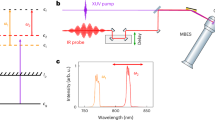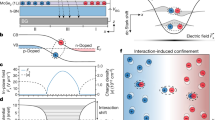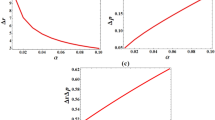Abstract
SEVERAL attempts have been made to develop a quantum theory of the Wheeler–Feynman direct interparticle action electrodynamics. We have developed an approach using an S-matrix perturbation expansion. The importance of the approach is two-fold. First, it provides a welcome confirmation, of the work of Hoyle and Narlikar1–3; and second, it possesses the following distinct advantages: (i) it uses a formalism which is familiar in the conventional treatment of quantum electrodynamics; (ii) particle wave functions are second quantized; with some effort the theory can be made fully relativistic; (iii) it is completely general; a separation allows the influence of the universe to be taken into account in an overall way, without discussing the specific processes of the system under interest; in this way, the complete equivalence of the conventional and new theories is established for all processes and all orders of the perturbation; (iv) the simplicity and familiarity of many of the expressions provide a ready comparison with the conventional theory. The approach thus provides a foundation on which an axiomatic formulation of direct interparticle action quantum electrodynamics may be constructed that is closely analogous to the conventional theory. In particular, the second quantization of the source particles allows the definition of operators analogous to the photon creation and destruction operators, in a way similar to that used by Klein4, and later by Heisenberg5,6 in conventional quantum electrodynamics.
This is a preview of subscription content, access via your institution
Access options
Subscribe to this journal
Receive 51 print issues and online access
$199.00 per year
only $3.90 per issue
Buy this article
- Purchase on SpringerLink
- Instant access to full article PDF
Prices may be subject to local taxes which are calculated during checkout
Similar content being viewed by others
References
Hoyle, F., and Narlikar, J. V., Nature, 219, 340 (1968).
Hoyle, F., and Narlikar, J. V., Nature, 222, 1040 (1969).
Hoyle, F., and Narlikar, J. V., Ann. Phys., 54, 207 (1969).
Klein, O., Zeits. f. Physik, 41, 407 (1927).
Heisenberg, W., Ann. d. Physik, 9, 338 (1931).
Pauli, W., Hand. d. Physik, 24 (i) (Berlin, 1933).
Feynman, R. P., Phys. Rev., 76, 769 (1949).
Author information
Authors and Affiliations
Rights and permissions
About this article
Cite this article
DAVIES, P. Cosmology and Quantum Electrodynamics. Nature 224, 1102 (1969). https://doi.org/10.1038/2241102a0
Received:
Issue date:
DOI: https://doi.org/10.1038/2241102a0
This article is cited by
-
Wheeler–Feynman Quantum Theory
Nature Physical Science (1971)



